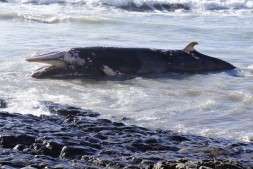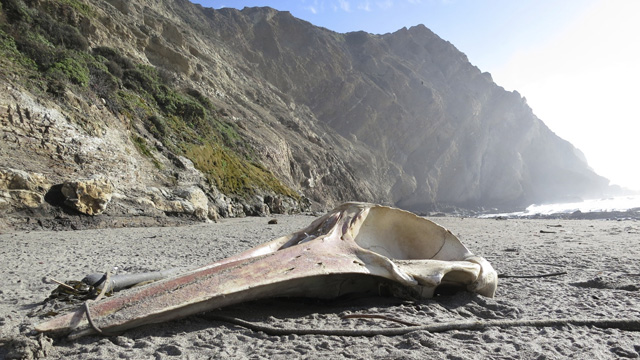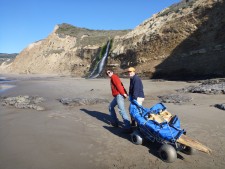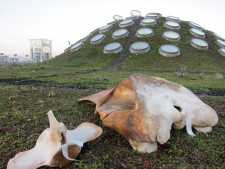A rooftop is a long way from the deep blue sea, so when I learned that the skull of a juvenile minke whale was resting atop the California Academy of Sciences' living roof, my curiosity was piqued.

On December 27, 2011, a hiker snapped some photos of a whale carcass stranded in a cove just south of Alamere Falls. Point Reyes ecologists forwarded the report to the Bay Area Marine Mammal Stranding Network team, a specialized group of volunteers and representatives from the California Academy of Sciences (which collects tissue samples and bones for its research collections) and the Marine Mammal Center (which leads any necropsy proceedings). In responding to such calls, their goal is to learn as much as possible from the animal's body. When you're talking about a body the size of a whale (literally), the logistics get complicated.
If you've ever hiked or biked to Alamere Falls, you'll know the beautiful spot is not easy to access. Luckily the team received special permission from the National Park Service to drive to Wildcat Camp, shortening their walk to a mile each way. Upon arriving at the scene, they quickly realized that between its location, the tide schedule, and ocean conditions, it would be impossible to access the whale during daylight hours. Unable to perform a necropsy to determine the cause of death, they left it to roll in the surf. This turned out to be a mixed blessing.

After just eleven days, the surf and surge had cleaned the skull and deposited it on the beach. The upside was that nature took care of the dirty work in record time. Typically to recover a skull, the team has to remove enough tissue by hand in order to transport the bones off the beach (not a task for the faint of heart). Then the skull is either buried or left to steep in a saltwater maceration tank for one to two months to finish the cleaning process. The downside to the "surf method" is that most of the smaller bones and tissue were lost in the ebb and flow.

A week later, the tides were right to collect the skull specimen, estimated at 200 pounds. The team sought special permission to drive to a point just one mile from the skull, greatly reducing the distance they needed to carry the heavy skull. It took five people two hours and a cart rigged from "beach wheels" and a pair of dollies to get the skull to their truck.

